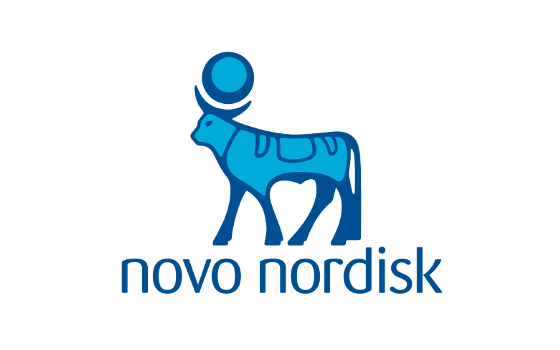 Divergent perceptions and attitudes about obesity may jeopardise obesity management outcomes, according to findings from the Awareness, Care & Treatment In Obesity Management (ACTION) study. The findings were presented at Obesity Week 2016, the fourth annual combined congress of the American Society for Metabolic and Bariatric Surgery and The Obesity Society.
Divergent perceptions and attitudes about obesity may jeopardise obesity management outcomes, according to findings from the Awareness, Care & Treatment In Obesity Management (ACTION) study. The findings were presented at Obesity Week 2016, the fourth annual combined congress of the American Society for Metabolic and Bariatric Surgery and The Obesity Society.
ACTION is the first national study to investigate barriers to effective obesity management from the perspective of people with obesity, healthcare professionals (HCPs) and employers in the US. The study was designed to generate insights to improve obesity care, education and support for the nearly 79 million people in the US living with obesity, a condition that was recognised as a chronic disease by the American Medical Association in 2013.(1,2)
"Obesity must be understood as a serious, often progressive disease requiring both prevention and treatment strategies to bring it under control," said Dr Lee Kaplan, director of the Obesity, Metabolism and Nutrition Institute at Massachusetts General Hospital Weight Center and ACTION steering committee member. "The value of the ACTION study is that it clearly identifies the challenges that must be overcome, and underscores the critical need for multiple communities working together to develop and implement effective solutions."
One such challenge, according to study findings, is that most people with obesity (PwO) (65%) perceived obesity as a disease; however, most (82%) considered weight loss to be "completely" their responsibility. While PwO (73%) reported that they had discussed weight with an HCP, 36% indicated they did not seek support from their HCP for weight loss.(3)
Another significant barrier to care revealed by the study was an inconsistent HCP-patient dialogue about weight management. Although HCPs (72%) felt they had "a responsibility to actively contribute" to patients' weight loss efforts, only 55% of PwO reported receiving an obesity diagnosis from an HCP. Also, only 16% of PwO reported having a follow-up appointment with their HCP following initial conversations about obesity management, and whereas HCPs said they were "comfortable" having obesity management conversations, their efforts were often deprioritised due to limited time.(4)
The study also found that despite several "serious" weight loss attempts, only 23% of PwO reported a 10% weight loss during the past three years, and of those, 44% maintained weight loss for more than one year.(4)
These data suggest that initiatives which foster greater understanding among HCPs of their patients' beliefs, and facilitate more robust dialogue about weight management, could positively impact obesity management efforts.(3,4)
About ACTION
The "Awareness, Care and Treatment In Obesity Management" (ACTION) study is the first US nationwide study to investigate barriers to obesity management from the perspective of people with obesity, healthcare professionals and employers. In addition, the study aims to generate insights to guide collaborative action to improve obesity care, education and support. Sponsored by Novo Nordisk, the ACTION study was led by a multi-disciplinary steering committee comprised of representatives from The Obesity Society, the Obesity Action Coalition, and the Integrated Benefits Institute, as well as obesity experts in the fields of primary care, endocrinology, physiology and nursing. The study involved more than 3,000 people with obesity, 600 healthcare professionals and 150 employers in the United States.
About obesity
Obesity is a disease that requires long-term management.(2,5) It is associated with many serious health consequences and decreased life-expectancy.(6,7) Obesity-related comorbidities include type 2 diabetes, heart disease, obstructive sleep apnoea (OSA) and certain types of cancer.(6,8,9) It is a complex and multi-factorial disease that is influenced by physiological, psychological, environmental, socio-economic and genetic factors.(10)
The global increase in the prevalence of obesity is a public health issue that has severe cost implications to healthcare systems. In 2014, 13% of adults, or approximately 600 million adults, were living with obesity.(11)
About Novo Nordisk
Novo Nordisk is a global healthcare company with more than 90 years of innovation and leadership in diabetes care. This heritage has given us experience and capabilities that also enable us to help people defeat other serious chronic conditions: haemophilia, growth disorders and obesity. Headquartered in Denmark, Novo Nordisk employs approximately 42,600 people in 75 countries and markets its products in more than 180 countries.
1. Centers for Disease Control and Prevention. Adult Obesity Facts. Available at: http://www.cdc.gov/obesity/data/adult.html. Last accessed: October 2016.
2. American Medical Association. A.M.A Adopts New Policies on Second Day of Voting at Annual Meeting. Obesity as a Disease. Available at: http://www.ama-assn.org/ama/pub/news/news/2013/2013-06-18-new-ama-policies-annual-meeting.page. Last accessed: October 2016.
3. Golden A, Dhurandhar NV, Jinnett K, et al. Insights and Perceptions of Obesity Management in People with Obesity: Results from a National Study. . ObesityWeek. 2016.
4. Kaplan LM, Golden A, Jinnett K, et al. Divergence in Perceptions and Attitudes among People with Obesity, Healthcare Professionals, and Employers create Barriers to Effective Obesity Management: Results of the National ACTION Study. ObesityWeek. 2016.
5. WHO. Obesity: Preventing and managing the global epidemic. Available at: http://www.who.int/iris/handle/10665/42330 Last accessed: October 2016.
6. Guh DP, Zhang W, Bansback N, et al. The incidence of co-morbidities related to obesity and overweight: a systematic review and meta-analysis. BMC Public Health. 2009; 25:88.
7. Peeters A, Barendregt JJ, Willekens F, et al. Obesity in adulthood and its consequences for life expectancy: a life-table analysis. Annals of Internal Medicine. 2003; 138:24-32.
8. Gami AS, Caples SM, Somers VK. Obesity and obstructive sleep apnea. Endocrinology and Metabolism Clinics of North America. 2003; 32:869-894.
9. Whitlock G, Lewington S, Sherliker P, et al. Body-mass index and cause-specific mortality in 900 000 adults: collaborative analyses of 57 prospective studies. Lancet. 2009; 373:1083-1096.
10. Wright SM, Aronne LJ. Causes of obesity. Abdominal Imaging. 2012; 37:730-732.
11. WHO. Obesity and Overweight Factsheet no. 311. Available at: http://www.who.int/mediacentre/factsheets/fs311/en/. Last accessed: October 2016.